Small Food Business Ideas

Starting a small food business can be an exciting journey, full of potential and opportunity. Tastes differ from person to person, but one thing is certain: everyone needs to eat.
With so many potential customers and a wide variety of product offerings, there is always room for one more food retailer in the market. As a first-time merchant, you might wonder what the most appropriate food business ideas are.
The food industry is constantly growing and changing, with new trends continuously cropping up. This opens up a load of avenues for reconsidering becoming a part of an industry that involves necessity, passion, cultural expression, and art.
In this ever-evolving world, finding a good idea that sets you apart can be challenging.
According to Guidant Financial, business and food are among the top most popular industries. There are many routes you can take when considering which food business idea to adopt.
Here are some factors to consider
- Market saturation and demand: Make sure there’s room for your business in the market.
- Profit margins: Some niches, like baby food or a coffee store, can have high-profit margins.
- Healthy vs. junk food: Consider the trends and preferences in your target market.
15 Profitable Small Food Biz Ideas
1.Food Truck
Food trucks are a popular way to start a food business offering growth that often outpaces traditional restaurants. A chef can create a unique menu and enjoy the mobility of reaching customers directly.

Instead of waiting for customers to come to a restaurant you can bring your offerings to them, providing limitless possibilities to sell without heavy investment in infrastructure and equipment.
Pro Tip: Consider setting up a truck that offers vegan or organic options, as Gen Z prefers healthy food over junk food due to health issues Whether you start from scratch, buy an existing truck, or get a franchise, food trucks remain one of the most popular ventures. Avoid the high failure rate by targeting a unique niche and making a solid business plan before hitting the road.
Advantages
- Mobility and Market Reach: Food trucks let startup entrepreneurs go where their customers are popular areas, downtown, beaches, or parks. This flexibility allows reaching remote areas or places without nearby restaurants, maximising market reach and potential profits
- Creative Control and Economic Boost: For aspiring chefs, food trucks offer the chance to create unique menus at lower costs than restaurants. They also support the local economy by providing jobs and offering a variety of food options, enhancing community engagement.
Drawbacks
- Navigating Legal Learning-Curves: Cities and towns have unique zoning laws outlining where and when you can sell your product. Familiarise yourself with these laws in each jurisdiction you plan to operate.
- Compliance with Health Codes: Adhering to local health department codes is crucial. Look up these regulations for the areas where you plan to sell to ensure compliance and avoid penalties.
2. Ice Cream Parlor

Ice cream can be served alongside any other dessert and comes in a wide variety of styles, including frozen yoghurt, sorbet, gelato, and frozen custard. With endless recipe ideas, niching is easy because everyone loves ice cream and running an ice cream parlor could be a fun couple activity.
For those who enjoy experimenting with crazy flavours and making delicious ice cream, this is a million-dollar business idea. There are limitless styles to explore, such as snow cream, and always room for innovative menus.
Advantages
- Creative Control: Ice cream allows for endless flavour combinations, perfect for inventive entrepreneurs looking to showcase their creativity.
- Scalable Business: The ice cream market sector has ever-increasing demand, making it easy to add SKUs to your menu as you scale your business.
Drawbacks
- Seasonal Downtime: Sales can slow down in the winter, making it a seasonal business with fluctuations in revenue.
- Limited Popularity: While ice cream is hugely popular in the summer, it may require seasonal varieties like pumpkin spice in the fall or candy cane during winter holidays to maintain interest.
3.Coffee Shop

Coffee beans are widely available from dropshippers, keeping overhead costs low. This presents a small-business advantage for first-time merchants looking to sell coffee.
Selling coffee online can be rewarding, less risky, and quickly scalable. With specific coffee needs rising, the success of various eCommerce stores like KoffeKult, a premium coffee beans store, shows the potential. Starting a region-specific store can be highly profitable.
Advantages
- Low Barrier of Entry: With dropshipping options, startup costs are low. You can focus on branding your product instead of developing it.
- Small-Brand Advantage: The high volume of customers puts an emphasis branding, giving an advantage to smaller brands.
Drawbacks
- High Competition: Emphasising “challenges” and “harder to market” might discourage potential small business owners due to the perceived saturation and difficulty in standing out in the coffee industry.
- Negative Perception: Highlighting marketing difficulties and supply chain challenges could create a negative view of the coffee shop business, deterring potential entrepreneurs from pursuing it.
4.Homemade Jams and Jellies
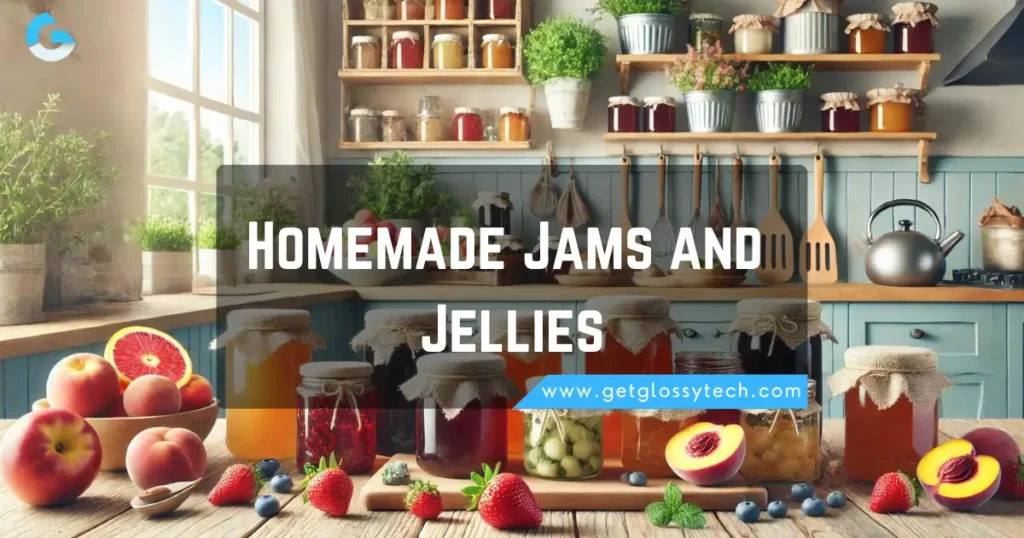
Starting a food business is an exciting venture, especially for entrepreneurs who enjoy growing fresh produce. One of the most rewarding and low-cost options is making jams and jellies. With at-home jarring machines being relatively inexpensive, it’s a great way to add a personal touch to your brand.
Advantages
- Niche Appeal:Emphasising the natural, healthier qualities of homemade jams can attract health-conscious customers who prefer artisanal products.
- Ease of Entry:Highlighting the low investment and ease of starting from home appeals to aspiring entrepreneurs looking for a low-risk business idea
Drawbacks
- Seasonal Appeal: Highlighting seasonal produce emphasises freshness and variety, appealing to farm-to-table enthusiasts
- Planning Expertise: Emphasising precise planning and supply chain management builds trust and showcases reliability.
5.Sauce
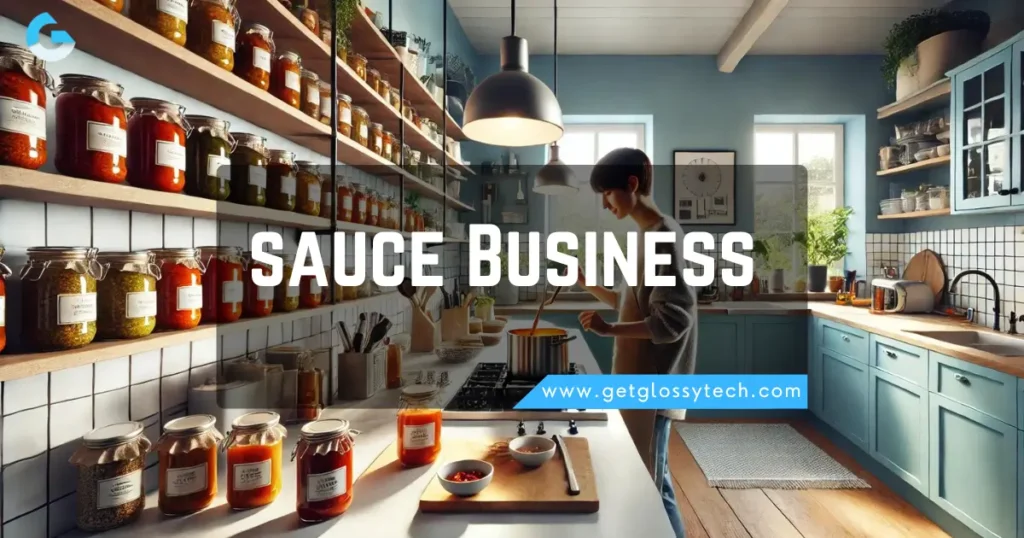
Sauces are a great product for first-time merchants. Food aficionados are always looking for new tastes to try and tend to be more receptive to less familiar brands.
Sauces are incredibly versatile and can be adapted to various cuisines and dietary restrictions. They can be savoury, sweet, spicy, or even all three.
Starting on a smaller scale, perhaps from home, allows for experimentation with peppers and herbs to create unique blends. This can elevate your business to the next level. Smaller businesses can carve out their niche and capture the attention of a loyal following:
- Experiment with flavours: Combining various peppers and herbs can result in a distinct taste that sets your sauce apart.
- Focus on quality: Ensure your sauces meet the highest standards to build a reputable brand.
- Utilise online platforms: Use social media and e-commerce sites to reach a wider audience and boost sales.
Advantages
- Customer Loyalty: In the sauces business, building strong customer loyalty is a significant advantage. The versatility of sauces allows them to be adaptable to many dishes, ensuring that satisfied customers will continue to choose your product for a variety of culinary applications.
- Adventurous Clientele: The sauces market also benefits from an adventurous clientele. New customers are often more receptive to unfamiliar brands, especially if these brands offer a unique branding experience
Drawbacks
- Market Saturation and Competition: Starting a small business of sauces can face the challenge of market saturation and intense competition. The need for unique branding and significant marketing efforts to attract adventurous clientele can be costly and time-consuming.
6.Baby Food Business
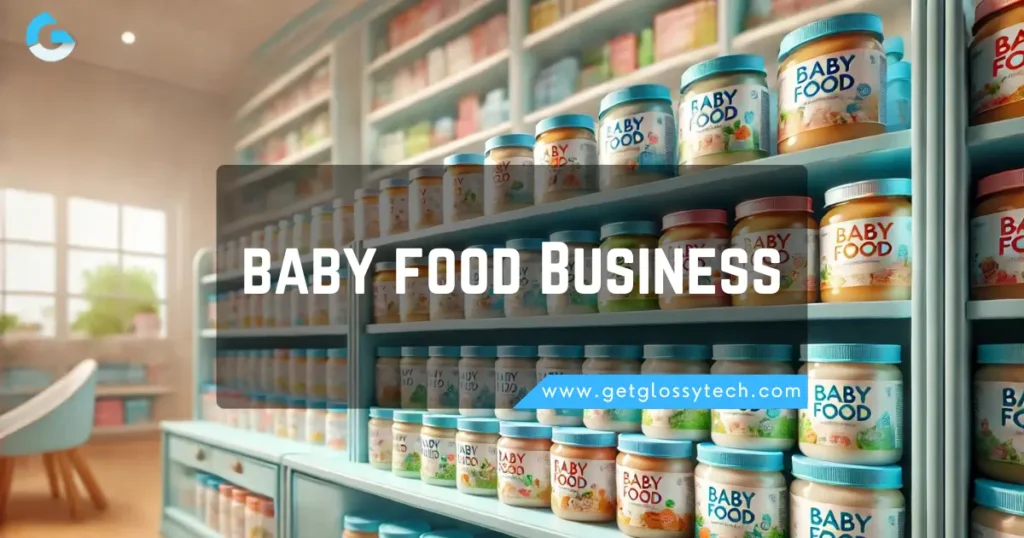
Parents are always looking for nutritious food for their baby. Starting a home-based business can be a great first step.
Baby food is relatively easy to make and sell. With doctors recommending different types of foods for babies at various ages, such as formula for newborns, mashed foods at six months, and softer solid foods for toddlers, there is a significant market opportunity.
Preparation is straightforward, focusing on steaming, roasting, and pureeing. It’s important to identify which foods are appropriate for each age group and ensure that the end consumer enjoys them.
Proper packaging to preserve freshness is crucial. Starting small with your savings and gradually expanding as you develop a client base can lead to a successful business.
Advantages
- Repeat Purchases and Brand Loyalty: Once parents find a food their child enjoys, they keep buying from the same company, ensuring a steady customer base.
- Market Availability and High Demand: There is a large market for organic baby food and products for various dietary restrictions. The consistent demand for baby food and the potential for growth offer opportunities for expansion and increased profits.
Drawbacks
- High Competition: The baby food market is highly competitive with many established brands and new entrants constantly entering the market.
- Strict Regulations and Compliance Costs: Baby food businesses must navigate strict regulations and standards to ensure product safety and quality. Compliance with these regulations can be time-consuming and expensive
7.Cooking Classes

Cooking classes present an excellent opportunity to connect with people who want to enhance their culinary skills. You can choose to conduct these classes in-person or virtually, depending on your resources and preferences.
The demand for cooking skills has surged, particularly since Covid-19, with many people keen to learn how to prepare healthy, tasty food at home.
Online courses provide flexibility for students who prefer to learn at their own pace. You might pre-record your lessons and allow students to watch them whenever they like.
Alternatively, hosting live events for an online audience can create a more interactive experience. With options ranging from one-on-one sessions to group classes and even a formal classroom format, there’s a method to suit every teaching style and audience preference.
Advantages
- Stronger Customer Relationships: Cooking classes help build personal connections with students, allowing you to leverage these relationships by selling products or services, enhancing your brand.
- Low-Cost Startup with High Value: Starting cooking classes requires minimal resources, making it risk-free. It also offers opportunities to improve health, learn new skills, and meet new people.
Drawbacks
- High Costs and Time Demands: High-end cooking classes can be expensive and require a significant time commitment, which might be challenging for less extroverted individuals.
- Limited Accessibility and Personalization: Location and schedule constraints can limit class availability, and some classes may not meet specific dietary restrictions or preferences. Additionally, online calls can be tough for clearly explaining cooking techniques.
8.Baked Goods
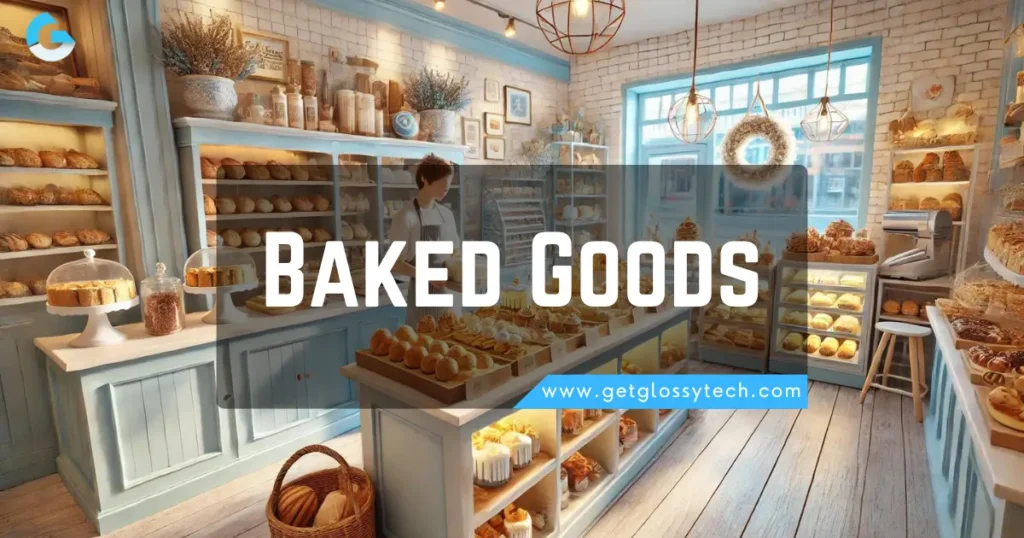
Baked goods like bread, cookies, cakes, pastries, and pies are staples for holidays and special events, making them popular year-round. If you’re passionate about whisking adventures, this is an excellent opportunity to start a bakery and share your creations with the world.
For a bakery, this might involve exploring Food Tech startups like Milk Bar, which have effectively met sweet tooth cravings and demonstrated how a bakery can thrive in a competitive market.
When setting up a bakery, you have various options to cater to different needs, including low-fat pastries and fresh bread. By focusing on specific areas such as dietary restrictions or unique baking styles, you can differentiate your brand.
Advantages
- Targeted Market Appeal: Catering to high-demand specialty bakeries and specific dietary needs helps attract customers seeking baked goods that meet their dietary restrictions.
- Brand Growth Potential: Addressing the demand for specialty baked products allows you to build a brand and differentiate from newer brands, driving long-term growth.
Drawbacks
- High Costs: Scaling a bakery business involves costly expenses for commercial baking space and high-energy ovens.
- Labour and Management: Baking is time-consuming and requires more staff. Managing multiple orders and inventory can be challenging.
9.Prepackaged Snacks
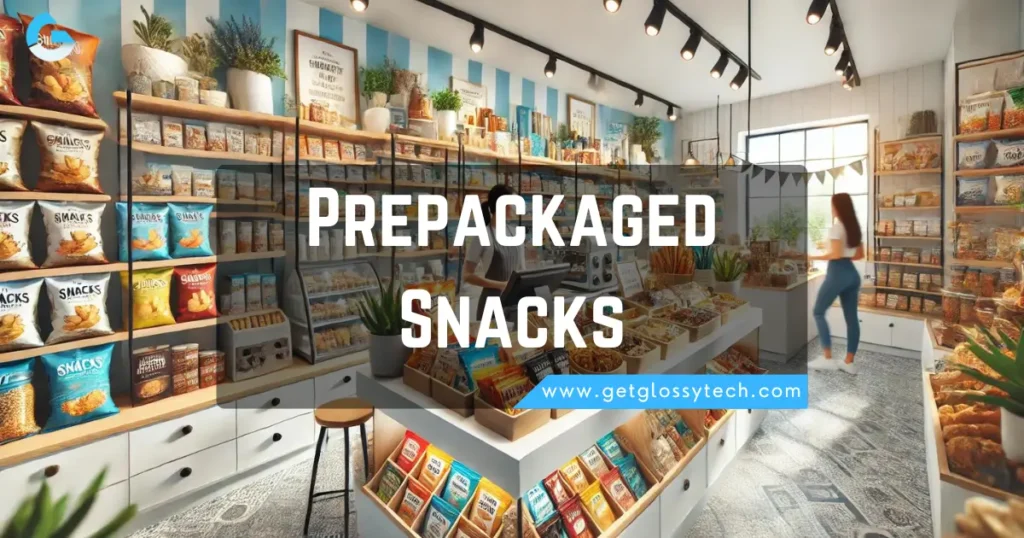
The market for savoury snacks in North America is projected to hit $139.4 billion by 2024. With such a high demand, especially for unique products, it’s a great time to dive into this sector.
To stand out, consider catering to specific dietary needs or offering unique and amazing snack delivery options, much like how Thrive Market has successfully penetrated the market.
With the right blend of grit and luck, and perhaps a touch of personal experience, your snacks could make it to grocery stores and capture a piece of this lucrative market.
Advantages
- Wide Product Variety :A large selection of food and flavour possibilities, combined with a uniquely labelled package, helps your brand stand out from the competition in the prepackaged snacks market.
- Lack of Innovation :There is a lack of innovation in the prepackaged snacks market. By starting with homemade snacks and selling to local retailers, you can capitalise on this gap and make your mark.
Drawbacks
- Competing with large brands: The snack-food industry is filled with many established brands, making it a significant challenge to differentiate your products from these competitors.
- Low margin: Prepackaged snacks often have a comparatively low margin compared to other food businesses. This means that while you might sell a high volume of snacks, the profit you make per unit is relatively small, which can limit overall profitability.
10.Catering Business
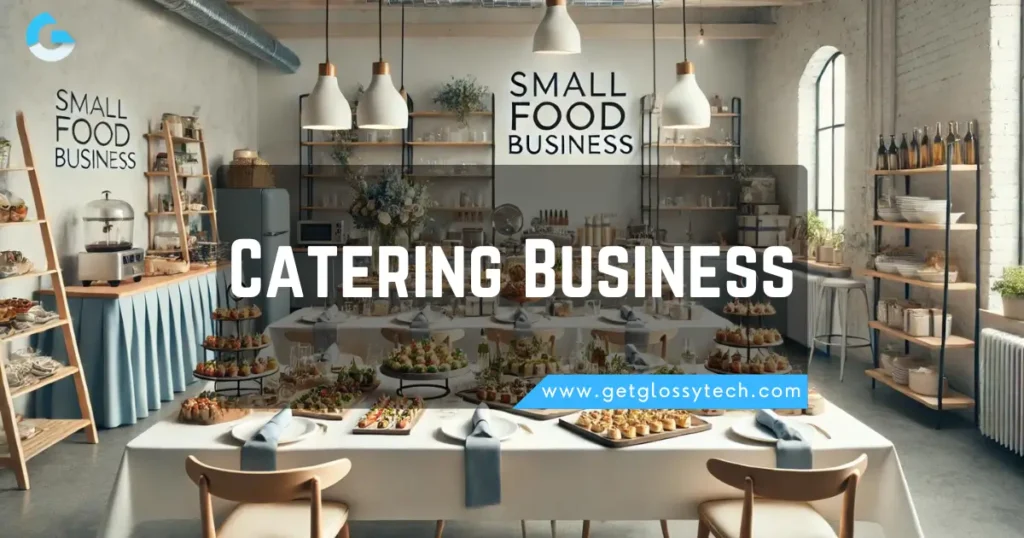
Starting a catering business can be highly lucrative, especially if you have strong planning and people handling skills.
As you gain experience and understand what works best, you can expand to bigger events.
Catering involves providing food at various venues such as hotels, ships, and wedding functions. The food can be either delivered to the site or cooked at a live counter.
There are different types of catering businesses including
- Corporate caterers
- Wedding catering services
- Independent caterers
You have the flexibility to choose the type that suits you and expand as you climb the ladder. Yummy Corp, an Indonesia-based company, is an example of a successful catering business delivering exceptional catering services.
Advantages
- High Profit Potential: Catering offers the opportunity for substantial financial gain through special events and celebrations.
- Flexible Schedule: It provides a flexible work schedule, allowing you to work in various locations and with a diverse clientele while fostering strong relationships.
Drawbacks
- High Start-Up Costs: The catering business often requires substantial initial investment for equipment and supplies, which can be a significant financial burden for new entrepreneurs.
- Physically Demanding: Catering can be physically exhausting, especially during peak seasons and when managing multiple events, making it a challenging industry to sustain over time.
11.Personal Chef

If you have experience in sales and enjoy building personal relationships with clients, becoming a personal chef might be a perfect fit for you.
Personal chefs are skilled cooks who prepare at-home meals tailored to their clients’ special dietary needs or preferences. This role offers a chance to work closely with individuals, families, or caterers for special events.
Starting as a personal chef allows you to leverage your skills to offer customised dining experiences.
For example, if you’re hosting a house party and prefer not to deal with cooking, you can easily find and hire a personal chef through services like TakeAChef(site).
Advantages
- Client Relationships: Emphasising relationship building and sales experience attracts clients who value personalised service.
- Flexibility and Earnings: Highlighting control over time and profitable business showcases the flexibility and potential high earnings of being a personal chef.
Drawbacks
- High Barrier of Entry: Starting as a personal chef demands significant skill and experience, making it tougher for newcomers compared to other food businesses.
- Unpredictable Hours: The need to work around clients’ schedules can lead to less flexibility in your hours, and you must constantly learn and evolve to meet new and innovative customer demands.
12.Meal Preparations Kits
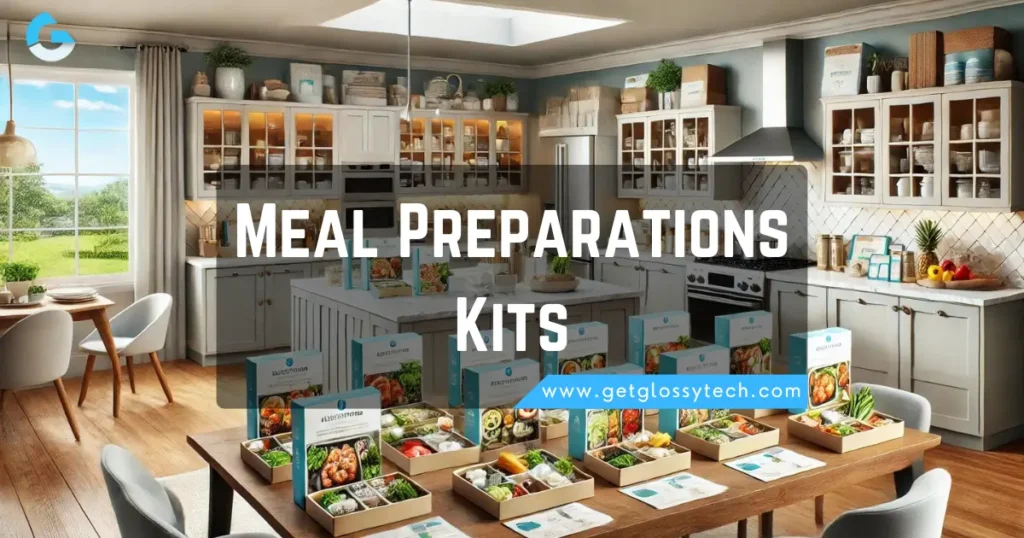
Meal kits are a food delivery business concept where customers receive pre-portioned ingredients and recipes to create high-quality dishes at home. This trend combines the convenience of fast food with the benefits of at-home cooking
They can be sold through a subscription-based model, where retailers provide customers with a new meal on a recurring basis, or as a collection of kits available à la carte.
The rise of meal preparation kits was notably accelerated by the COVID-19 pandemic
By putting together ingredients and a recipe guide, you can offer a variety of food options or a limited menu based on your customers’ preferences.
Advantages
- Expanding into new niches: The meal kits market offers opportunities for new brands to target specific foods and untapped niches.
- Room for innovation: As a young business, meal kits allow for innovation and exploration of new niches to meet diverse customer needs.
Drawbacks
- Spoilage Risk: Shipping perishables in meal kits increases the risk of spoilage due to the limited time fresh foods can be stored and challenges in maintaining refrigeration.
- Freshness Maintenance: Keeping fresh foods at optimal conditions during shipping is difficult, raising the chance of spoilage and affecting meal kit quality.
13.Food Blogging

Starting a food blog is a brilliant small food business idea for those with cooking skills. With new free blogging platforms, you can easily design your blog for free and begin creating content for your audience
To monetize your food blog, consider these strategies
- Selling ad space
- Including affiliate links
- Selling eBooks and recipe books
- Creating online cooking courses
- Making sponsored posts and brand deals
- Selling physical products and merchandise
- Implementing a membership or subscription model
Advantages
- Passive Income: Food blogging offers a passive source of income that you can start almost free, earning money through ads, affiliates, and sponsored posts.
- Audience and Popularity: A food blog can reach a wide audience, gaining you popularity and respect in the culinary world, leading to more opportunities and collaborations.
Drawbacks
- Requires Patience: Achieving success as a food blogger demands a lot of patience, which can be discouraging for some.
- High Competition: Intense competition makes it tough for new food bloggers to stand out and become successful.
14.Meal Delivery Service
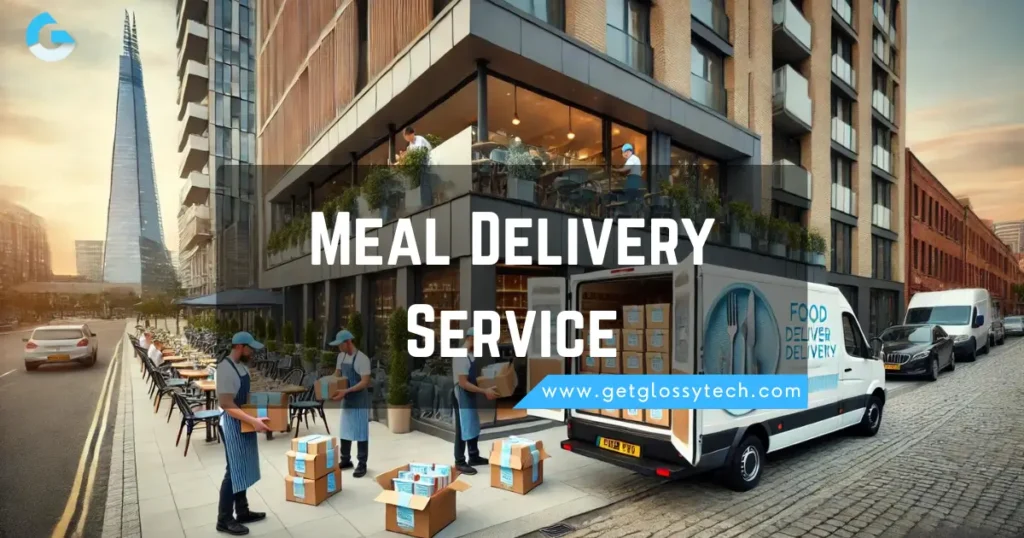
Food delivery has emerged as a top small food business idea, especially after its popularity skyrocketed during the Global COVID-19 pandemic.
This trend offers an excellent opportunity to cash in on the booming food delivery ecosystem.
You can choose to partner with a specific restaurant or brand or offer a general service to various businesses. However, with many players in the market, setting yourself apart can be a challenge. Identify what the existing delivery services in your area are lacking, and provide a best service with a cargo van that fixes those issues and performs better.
Advantages
- Reaches Remote Areas: Meal delivery services can reach customers in remote areas and offer a wide variety of food options from different restaurants.
- Boosts Local Economy: The food delivery business provides job opportunities and boosts the local economy, with options like a cloud-kitchen allowing you to sell food online without needing a traditional restaurant.
Drawbacks
- Higher Costs: Delivery fees can add up, making the overall cost more expensive for customers compared to dining in a restaurant.
- Food Quality: Food may not always be as fresh or hot as when dining in a restaurant, and you need extraordinary management skills to handle deliveries with excellent efficiency.
15.Dessert Business

Starting a dessert shop or business can be a lucrative small food business idea. You could offer a range of sweet treats like cupcakes, brownies, pies, and cakes, catering to various customer preferences.
If your desserts receive rave reviews, consider establishing your own dessert shop.
Here are some essential steps to set up your business
- Find a mentor to help you get started.
- Create a business and marketing plan.
- Check what resources you have and find a place to buy or rent.
- Get a pre-inspection from your local health department.
- Buy or rent kitchen equipment.
- Hire staff and get ready for your grand opening.
- Promote your dessert shop well.
Advantages
- Diverse Offerings: You can offer a range of sweet treats to attract various customer tastes.
- Profit Potential: A dessert business can be highly profitable, with examples like The Cupcake Collection showing substantial revenue potential.
Drawbacks
- High Competition: The dessert business is often crowded, making it challenging to stand out and attract customers.
- Perishable Inventory: Desserts can spoil quickly, leading to potential waste and requiring careful inventory management to avoid losses.
Ready to Start a Business? Must-Do these 6 Steps
- Decide What Kind of Food Product to Sell
- Create a Solid Business Plan
- Explore ways of marketing
- Start building your brand
- Create Your Online Store
- Find and Grow Your Audience
1.Decide What Kind of Product to Sell

Choosing your initial product can be challenging due to the vast options in the food industry. The crucial first step is to ask yourself: Does this idea truly excite me?
If it doesn’t, discard it. Your enthusiasm for your food business is essential for its success. Even the best idea won’t flourish if you’re not passionate about it. Once you’ve settled on an idea that sparks your interest, it’s time to assess its viability.
2.Create a Solid Business Plan

A business plan is essential for any enterprise, including a small food business. It serves as a roadmap, detailing your objectives, mission, target audience, competitive landscape, marketing strategies, and financial forecasts.
A well-developed plan will not only guide you through the initial setup of your business but also act as a reference as you expand.
The market analysis portion of the restaurant business plan is divided into three key areas:
Competition Analysis
Competitive analysis involves evaluating your competitors from multiple angles to understand the market landscape and determine your place within it. This includes assessing their menu items, marketing strategies, business practices, pricing, and brand positioning. While it might seem unusual to conduct this analysis before selecting a location, it offers significant advantages.
Industry Analysis
Industry analysis involves examining various elements of the sector you plan to enter. This includes researching your market, understanding your competition, and staying updated on industry trends to create a robust restaurant business plan. Although it may seem complex, industry analysis is manageable and essential, as it lays the groundwork for your business.
Marketing Analysis
For effective market research, focus on the local market by exploring these questions:
- How have restaurant sales trends shifted recently?
- Which cuisines are performing well?
- What are the current profit margins in the restaurant business?
- Are there more new restaurants opening or existing ones closing?
- What challenges do restaurant managers face, such as regulations or staffing issues?
- Are franchised or independent restaurants more successful?
- What are the emerging consumer trends?
- How much do customers typically spend per meal, and does this vary by time or day?
- What popular marketing channels are used, and are there new trends in takeaway or online sales that you can capitalise on?
Understanding these aspects will help you make informed decisions about establishing your restaurant, positioning your business effectively, and navigating potential challenges.
3.Explore Ways of Marketing

- Step 1: Define a Mission Statement.
- Step 2: Research a Target Demographic.
- Step 3: Perform a SWOT Analysis.
- Step 4: Define Your Brand.
- Step 5: Research Media Sources
- Step 6: Set a Budget
- Step 7: Analyse Results and Correct Course.
4.Start Building your Brand

Begin shaping your brand now. Branding is essential in any business, but it’s a game-changer in the crowded food industry. Your brand is what makes you stand out from the competition, so it’s vital to create a striking and consistent visual identity that captures potential customers’ attention.
Explore our guide to discover how to define your target audience, understand their desires and interests, and infuse your business with a personality that truly connects with them.
5.Create your Online Store

After you’ve created your brand, it’s time to set up your online store. Start by adding your products, organising them into collections, and personalising your store’s look to match your brand’s style. Make sure everything visually fits together to create a cohesive and attractive shopping experience.
6.Find and Grow your Audience

Once your store is ready, it’s time to start attracting customers. There are many ways to build your audience, like creating engaging organic social media posts that resonate with your niche or using paid ads to expand your reach.
You might also think about collaborating with social media influencers to boost your visibility. Alternatively, your business might benefit from blog content that speaks directly to your target audience.
The most effective marketing strategies will depend on your branding, audience, product, niche, and other unique aspects of your business.
Which food delivery service makes the most money?
With the rise of food delivery services, you might wonder which food delivery service makes the most money. The food delivery market is competitive, but services that offer a wide variety of products, reliable customer service, and efficient delivery times tend to be the most successful.
Companies that invest in understanding market saturation and demand can position themselves to capture a significant share of this growing industry. By staying updated on trends and continuously adapting, your food business can thrive in this dynamic market.
Grow Your Business with Innovative Small Food Business Ideas
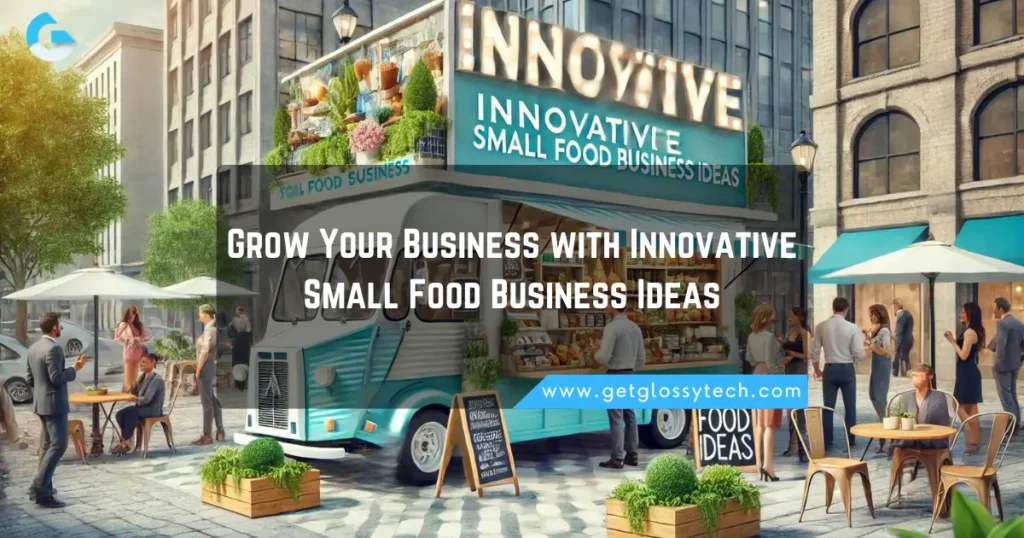
Harnessing the Power of a Custom Website
In the digital age, establishing a robust online presence is crucial for any business, especially for burgeoning small food enterprises. A custom website acts as your digital storefront, offering a tailored space where potential customers can explore your menu, learn about your story, and even place orders directly.
Key benefits include
- Brand Identity: A website is a powerful tool to showcase your unique brand, differentiating you from competitors.
- Customer Reach: With SEO optimization, your site becomes a beacon, attracting food lovers who are searching locally for new culinary experiences.
- Operational Efficiency: Integrate features like online reservations, menu updates, and customer feedback to streamline operations and enhance the customer experience.
Leveraging Social Media for Community Engagement
To truly flourish, small food businesses must create a community around their brand. Social media platforms are ideal for this, offering direct channels to engage with your audience.
Optimising Local SEO: Be Found Where It Matters
For small food businesses, local visibility can make all the difference. Optimising your website for local SEO ensures that when potential customers are searching for the best local bites, your business comes up top.
FAQ: Small Food Business Ideas

What foods are easy to sell?
Baby food is one of the easier things to make and sell and can be a great first-time home-based business. There’s also growth potential with a baby food business.
What food business is most profitable?
Fast-food restaurants are some of the most profitable types of restaurants because the food is quick to make, the ingredients don’t cost much, and customers love a good fast-food meal
What’s the cheapest small business to start?
Cheap Family Meals Under $10
- Spanish Rice Soup.
- Ramen Noodle Stir Fry with Vegetables.
- Crescent Roll Sausage Egg Casserole.
- Chicken and Rice Casserole with Broccoli.
- Creamy Tomato Bacon Pasta.
- Easy Cheese Manicotti.
- White Bean and Spinach Soup.
- Black Bean Enchilada Casserole.
Conclusion: Small Food Business Ideas
It’s always rewarding to earn money while doing what you love. For passionate food entrepreneurs and chefs, the possibilities are endless.
Now is the perfect time to transform your culinary dreams into reality, whether that means crafting vegan sandwiches, artisanal ice creams, or launching a fast-food restaurant online.
You can start today, no matter where you are or what resources you have. Build your unique brand by showcasing your culinary creations and sharing your passion with the world. Embrace the chance to connect with food lovers everywhere and let your dishes tell your story.

